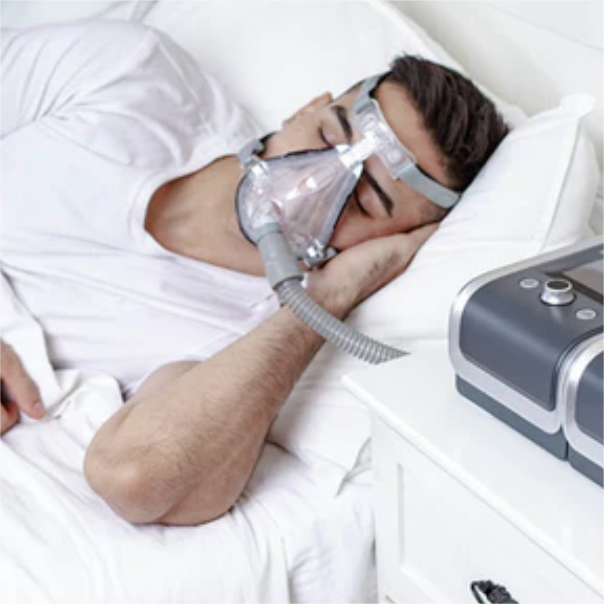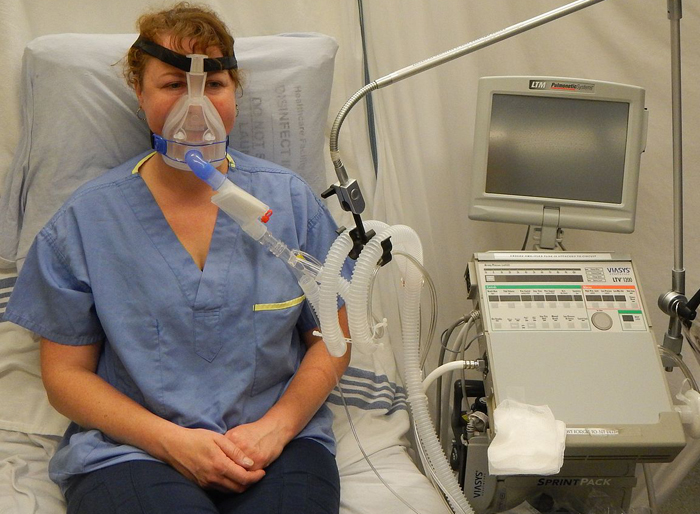BiPAP Rental: Trusted Equipment for Comfortable Rest
BiPAP Rental: Trusted Equipment for Comfortable Rest
Blog Article
Bipap vs. CPAP: Which Is the very best for Your Rest Disorder?
When navigating the complexities of sleep disorders, the option between BiPAP and CPAP therapy is an important factor to consider. Each technique provides distinct benefits tailored to details conditions, yet the choice rests on private client needs and convenience degrees. While CPAP provides a steady air flow ideal for obstructive sleep apnea, BiPAP's twin stress settings may boost convenience for those with more elaborate respiratory concerns. Understanding these differences can significantly influence therapy efficiency, leaving one to ponder which choice truly straightens with their health and wellness requirements and way of living.
Comprehending Sleep Disorders
Rest disorders include a range of conditions that disrupt typical rest patterns, affecting both the quality and period of remainder. These conditions can show up in various kinds, including sleeping disorders, rest apnea, narcolepsy, restless leg disorder, and parasomnias. Each condition offers unique difficulties, frequently leading to substantial daytime fatigue, cognitive disability, and psychological disruptions.
Insomnia is identified by difficulty falling or remaining asleep, while rest apnea includes repeated interruptions in breathing throughout rest, commonly resulting in fragmented remainder. Narcolepsy, on the various other hand, is noted by extreme daytime drowsiness and sudden sleep assaults. Uneasy leg syndrome triggers uneasy sensations in the legs, triggering an irrepressible desire to relocate them, which can additionally prevent the ability to sleep.
The effect of sleep conditions expands past individual health, influencing general efficiency, relationships, and top quality of life. Recognizing the specific nature of each disorder is crucial for efficient diagnosis and treatment. As sleep health and wellness ends up being significantly acknowledged as an important component of general health, attending to these conditions is necessary for boosting both sleep high quality and day-to-day performance.
Just How CPAP Functions
Continual Positive Airway Pressure (CPAP) treatment is regularly used as a main treatment for obstructive sleep apnea (OSA) The system of CPAP entails using a maker that provides a steady stream of air via a mask put on throughout sleep. This airflow keeps favorable stress in the respiratory tract, stopping the collapse or obstruction of the throat that can occur during sleep.
When a patient inhales, the CPAP maker supplies a constant flow of air, ensuring that the respiratory tract stays open - BiPAP Rental. This not only alleviates the symptoms of OSA, such as snoring and interfered with sleep patterns, but likewise minimizes the involved wellness dangers, consisting of cardiovascular problems and daytime exhaustion
The stress settings on a CPAP maker can be tailored to meet private client demands, commonly determined with a rest research study. Overall, CPAP therapy has been revealed to substantially improve the top quality of rest and total health for people suffering from obstructive rest apnea.
How BiPAP Functions
BiPAP, or Bilevel Positive Airway Stress, is a customized type of non-invasive air flow that is particularly beneficial for people with problems such as complex sleep apnea or respiratory conditions. Unlike CPAP, which delivers a constant stream of air at a single stress, BiPAP supplies two distinctive pressure setups: a higher inspiratory stress for breathing and a reduced expiratory stress for exhalation. This dual-pressure strategy allows for simpler breathing, minimizing the effort called for throughout exhalation.
The gadget operates with a mask fitted over the nose or mouth, connected to an equipment that generates try this site air pressure. When the individual inhales, the equipment supplies the higher stress to help with airflow, making sure that the respiratory tract stays open. Upon exhalation, the equipment instantly decreases the pressure, making it extra comfortable for the client to take a breath out.

Key Differences In Between BiPAP and CPAP

In contrast, BiPAP (Bilevel Positive Airway Pressure) provides two various pressure setups: one for inhalation and a lower one for exhalation. This dual stress system permits for even more comfy breathing, especially for people that battle with breathing out versus a constant pressure. BiPAP is frequently recommended for individuals with complicated rest apnea, chronic obstructive pulmonary disease (COPD), or those that require added support during rest.
Additionally, the complexity of BiPAP tools usually leads to a greater expense and calls for much more cautious titration than CPAP. BiPAP Rental. Comprehending these key differences can assist in acknowledging which gadget may be better for particular sleep conditions, establishing the foundation for enlightened therapy decisions
Picking the Right Therapy
The decision in between BiPAP and CPAP therapy largely pivots on the certain attributes of the rest disorder, the individual's total health and wellness, and their convenience with the gadget. CPAP, which supplies a continual stream of air, is frequently recommended for obstructive rest apnea (OSA)
Alternatively, BiPAP offers two levels of pressure: one for breathing and a lower one for exhalation. This dual stress system is advantageous for patients with complex rest apnea or those who dig this experience problem exhaling versus a continual pressure. Additionally, BiPAP is frequently advised for people with respiratory problems, such as persistent obstructive pulmonary condition (COPD), where differing stress setups can improve comfort and compliance.
Eventually, a comprehensive evaluation by a rest specialist, including a sleep research, can help figure out which treatment aligns ideal with the patient's needs. Variables such as comfort, simplicity of usage, and details clinical problems must additionally be taken into consideration to optimize therapy end results.
Conclusion
In summary, both BiPAP and CPAP offer distinctive functions in the administration of rest conditions. CPAP works for obstructive sleep apnea through regular air flow, while BiPAP offers dual stress settings that boost comfort for those with intricate rest apnea or respiratory concerns. The option in between these treatments should be assisted by private needs and problems, necessitating a detailed analysis by a rest professional to ensure optimum therapy end results and improved top quality of rest.

Generally, CPAP treatment has actually been shown to substantially boost the quality of sleep and general health and wellness for people suffering from obstructive sleep apnea.
BiPAP is commonly advised for clients with complex rest apnea, chronic obstructive pulmonary illness (COPD), or those that call for additional support during sleep.
CPAP is efficient for obstructive sleep apnea through consistent airflow, while BiPAP provides double pressure settings that improve convenience for those with intricate rest apnea or respiratory system concerns.
Report this page